From my first year of teaching, my classes had a laid-back atmosphere combined with my clear enthusiasm for the material. My delivery was primarily based on the school experiences I had in high school. Math was mostly, lecture, hw, quiz, test, and repeat to start. As the year progressed, emphasis on projects became a focal point from understanding the math involved in making a car purchase to teaching the elementary students.
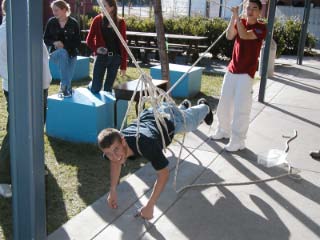
Throughout those early classes, and through to today, I strive to make the class environment enjoyable and relevant. Learning can, and should, be empowering and joyful. Everything that you learn can be applied to your life, often in unexpected ways. These core tenants are well represented in the convocation and graduation speeches I was asked to give in my last year at Bentley. Some B-roll from playfish (a media company that makes many of our promotional videos) of my classroom demonstrates this light atmosphere while students are also working hard on assignments.
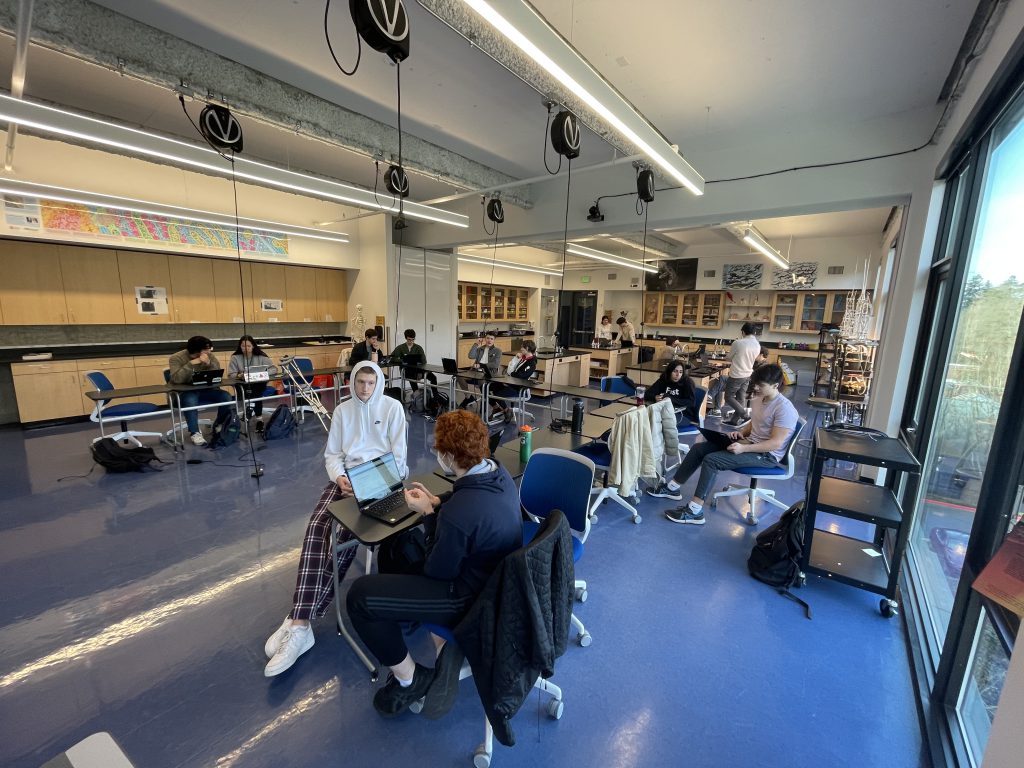
The move to Eastside Prep shifted my practice towards doing more group work with students in the classroom. Previously, group work occurred primarily in labs and projects in my courses but rarely with the introduction of material. In those early years, it felt like I wasn’t “working” if the class was working on their own.
In 2010-11, Matt Delaney and I designed the Evolution of Society course, which we first taught in 2011-12 and refined extensively over the subsequent three years. That process showed me a much richer diversity of ways of conducting a classroom and emphasized students working together to build understanding, Matt had a very different (and more educated) framework for how a class should go.
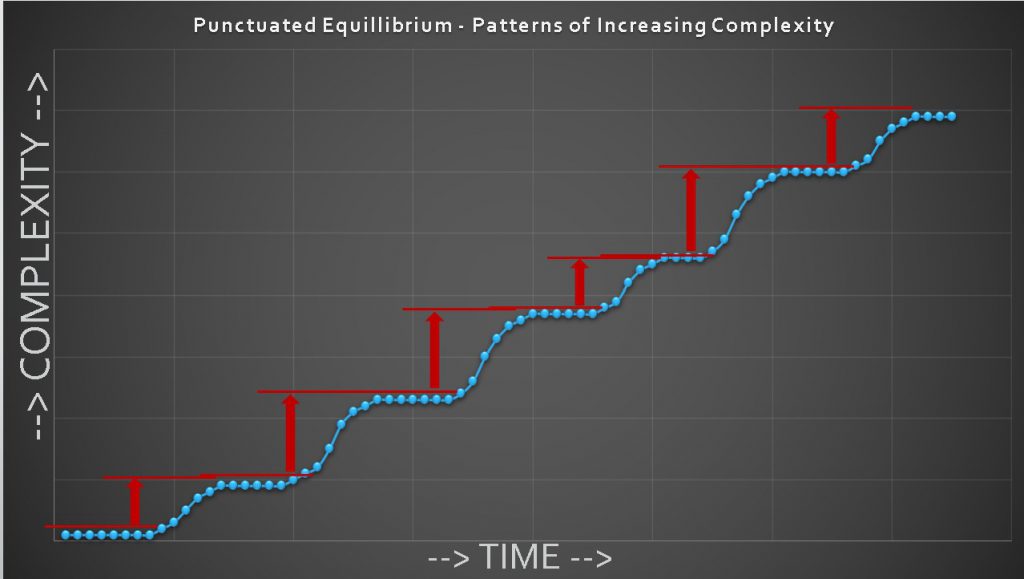
Classroom management was a particular challenge in those first years. Both because we had an interesting mix of students at start-up schools (I was at Bentley for their Upper School years 4-7 and all of Eastside Prep’s Upper School years), I was in my early 20s, and because the laid-back atmosphere made for a lot of boundary exploration by students. To be fair, some of these were school-wide behaviors that began prior to my class such as the cohort of kids that would spank each other when they weren’t looking, the student who would randomly make raptor noises during class, among some others that I’ll leave off the PDP – but you can ask me about any time.
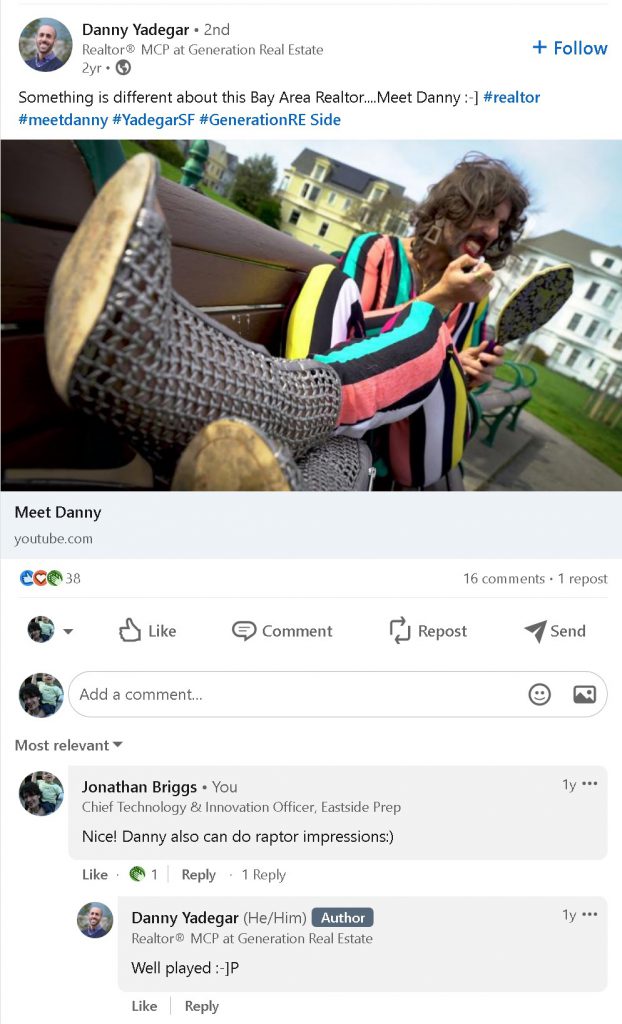
Today, the challenge is quite different. With years of experience, running a class on autopilot is possible. There is a constant need to check whether your class decisions are based on habit or tuned to the content and people in the room, especially as the workload in other domains increases. I’m also rusty, while I know more about teaching now, there is a loss of fluidity when you aren’t in the classroom full-time.
Classroom Culture
| Coaches and reinforces peer-to-peer dynamics that are appropriate and constructive | 🗸 |
| Communicates behavioral expectations that are appropriate to class activities | 🗸 |
| Develops a mutually respectful relationship with each student, instilling confidence that the teacher is invested in their success | 🗸+ |
| Demonstrates cultural competence by promoting inclusivity | 🗸 |
| Designs and facilitates a classroom culture that promotes student preparedness, engagement, self-advocacy, perseverance and collaboration | 🗸+ |
I have always known what type of experience I wanted for each student in my classroom. They should enjoy their time there, they should be learning, they should feel a sense of belonging, and they should know that their teacher is confident that they can succeed. Additionally, they should know that their life is full of choices. They can choose to not do homework and accept the consequences, they can advocate for whatever they need in that classroom. While I know that they are able to learn calculus, only they can know whether it is worth their time and effort.

I quickly discovered injecting meaning and wonder into the classroom environment supported these goals. Students would respond to seeing math and science in the world around them and engage more deeply if they could see applications elsewhere. It was also apparent that some students would need some time outside of class to wrestle with concepts. I seem to be especially skilled at one-on-one meetings, having students return for additional time, sometimes even for help with their other courses.

A laid-back atmosphere and student empowerment can lead to difficulty in managing a classroom. Additionally, it is particularly difficult for me to consistently remember the rules and consequences that I have laid out. In my first year, this was especially challenging. I found myself trying to enact control through punitive measures which, when tested, were harsher than I was willing to implement. That didn’t work, it led to boundary testing and feelings of unfairness. Later that first year, the system moved to infractions being treated generously which made it easy to hold the line on consequences. Many years later, at Eastside Prep, I would move to stating expectations without the consequences, asserting that I expected no infractions and handling them based on the situation for behavioral concerns and only stating the consequences for choices that I encouraged students to make for themselves (such as skipping a homework assignment or turning in something late).
being able to make the class room a very welcoming and lighthearted environment which made the information fun
We were allowed freedom but still given clear instructions
A good style of teaching, and the way you spread your enthusiasm to the students
He is super helpful and flexible. I always feel comfortable approaching him with questions about really anything.
He got a chill vibe and is approachable and understanding
Calm/clear well-spokenness and experimental teaching
They’re really good at persevering through an issue and are open to a ton of questions. They’re responsive and provide a lot of support.
No need to suggest anything as you ask for a lot of feedback already and (as far as I can tell) will actually implement it in the future
Selected quotes from Student Experience Surveys 2016-2023
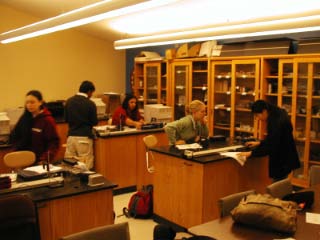
While my early years were solid on individual student experience and teacher-student relationship, student-to-student and classroom as a whole were not considered, beyond forming lab and project groups. The classroom culture was ok but students did not get practice working with each other nor holding an environment that encouraged all voices to participate. Working with Matt and Terry in co-teaching capacities was instrumental in building awareness, and techniques for, optimizing peer-to-peer dynamics and class culture surrounding discussions. It is worth acknowledging that much of this effort is done by English and Social Science colleagues well before students enter my classroom. The transformation of student discussions at Eastside Prep really took off around the introduction of the Harkness Discussion around 2011.
This is less about this class, but I don’t always enjoy the environment in my section.
Be a little easier on the people who don’t get it at first.
The class feels a little bit bland at times. I am not sure what I would like, but I think I would learn a little more about current trends in data science.
Make classtime more varied and engaged.
I don’t think the teacher has any flaws, I had more problems with the course curriculum pacing.
Same 2016-2023 era, some things I might have caught or addressed if I wasn’t rusty
Pedagogical Effectiveness
| Begins class sessions with a clear statement about the lesson’s objectives and place in the progression of the course | 🗸+ |
| Designs and implements varied activities in each class period | 🗸 |
| Brings each activity to closure effectively and transitions intentionally to subsequent activities | 🗸 |
| Ensures that students are using tech and tools effectively | 🗸 |
| Concludes class with a summary and clear tie to the next class | 🗸+ |
In my first year in both math and the next in physics, while I had a vague outline of what I wanted to cover for the year, I could rarely speak to where we were or where we were going to be at any given time. I distinctly remember thinking, “it is probably time for a test about now… what’s the rule, one week’s notice, and then announcing to the class, there will be a test next week on the things we have covered since the last test.” That was not a plan.
Similarly, varied activities were not valued (at least at Bentley in 2002). My lecture with questions and then tests and quizzes received no feedback (literally none, neither positive nor negative). Having my students teach math to the elementary school was received well but was not encouraged one way or the other. I am quite pleased with how much EPS encourages such alternative methods of teaching.
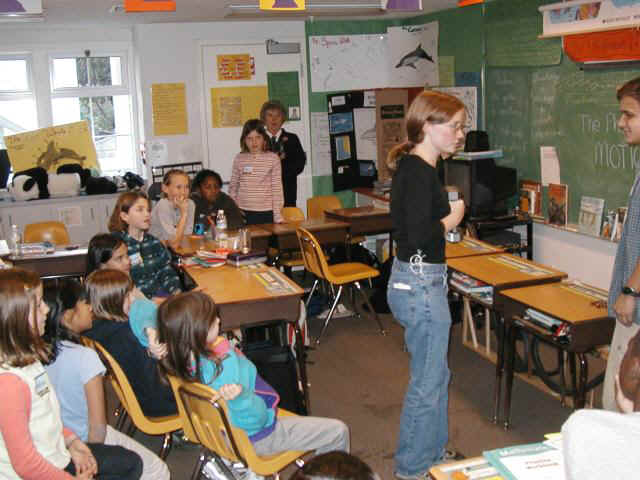
Activity transitions can be a difficulty for me. In my most successful years, on this metric, I had decided on the ~4 modes that the class would be in before starting the term. Say, lab, quiz/test, lecture, discussion. Then we would move the classroom into each of those modes. Spending time on this pays dividends down the road if you set it up at the beginning of the term. If you forget, as I often do, the value of spending time doing that is reduced each passing class period. The other struggle for me is calling the class back to attention after independent or group work time. On one hand, I want everyone attentive before I roll into the next activity, while on the other, I don’t want the people ready to go waiting around for the people late to the transition to get there. I feel that the consequences should fall upon the students still distracted. This is also how I feel about improper use of tech tools in class; let the consequences of being distracted show themselves to students instead of spending everyone’s shared time addressing the one or two students who are distracted.
To some degree, I also haven’t thought it was a big enough problem to start talking to colleagues about their techniques. After reflecting on many aspects of my practice, I look forward to talking to peers about growing that capacity.
The most significant growth moment for me came in year three from an article in the early 2000s (that I can’t seem to dig up). The gist of the article was that different students need different things from their teacher before they can learn. There are some students who need to be confident that their teacher is an expert in the subject, others who need to be confident that their teacher cares about them, others who need to feel that they have study-partner in the class and so forth. This expanded my view of the classroom from trying to create the environment that I assumed all students liked (i.e. the one I wish I had in school) to looking for the different ways in which students experienced a class. This realization is important to the teacher and one that is important for students to understand as well. Naturally, this points towards diversifying the ways in which class is conducted and asking your own students for feedback.
This past year in Data Science 1, after we experienced a variety of class styles, I ran a survey to see what preferences there might be on ways of learning course content.
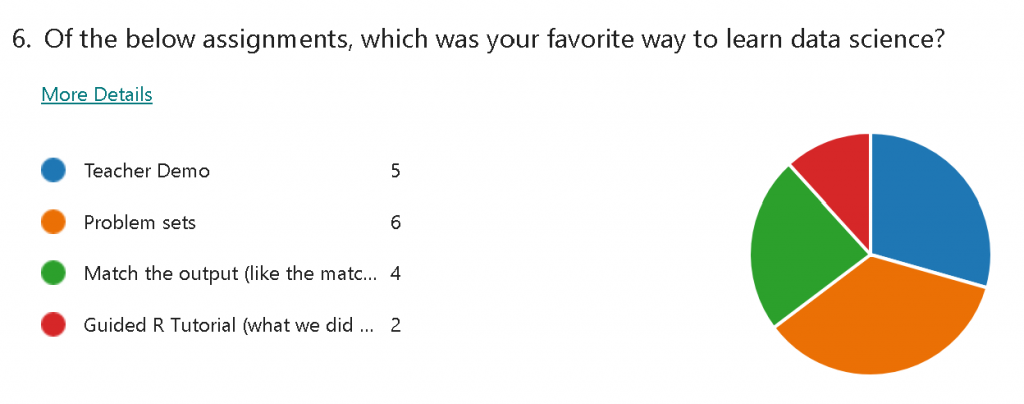
Different students resonate with different types of assignments. Guided R tutorials were expected to be low since we had only done one of them at that point, the distribution of the rest of the assignment types was wider than I expected. The next day, these results were presented back to the students so they might better understand why we have different types of assessments in that class and in all of their classes.
Differentiated Instruction & Assessment
| Considers and addresses each student’s learning profile | 🗸 |
| Designs class activities and assignments that engage and accommodate for both individual students and a diverse group of learners. | 🗸 |
| Builds in opportunities for each student to contribute during each class period | 🗸- |
| Provides alternative explanations of course concepts | 🗸+ |
| Adapts instruction based on formative assessment | 🗸 |
In this domain, the middling scores reflect a continued escalation of the skills of my colleagues. Some of the ways in which they address classroom contributions and differentiated activities are truly impressive. In many ways, I would consider myself a strong 2010-era teacher in this area who hasn’t had enough seat time to hone techniques in a more modern (or EPS) collaborative classroom environment.
My greatest strength in this area is in alternative explanations of course concepts. I naturally abstract ideas and have a broad general understanding of systems. For course concepts one successful technique is to ask the student what they are passionate about and then find where those concepts come into play. That accomplishes both teaching the concept and showing the relevance of those concepts to things that they care about (which isn’t always math or physics). I also find it personally gratifying to understand concepts from as many different angles as possible. Understanding a student’s interest profile is as important as their learning profile.
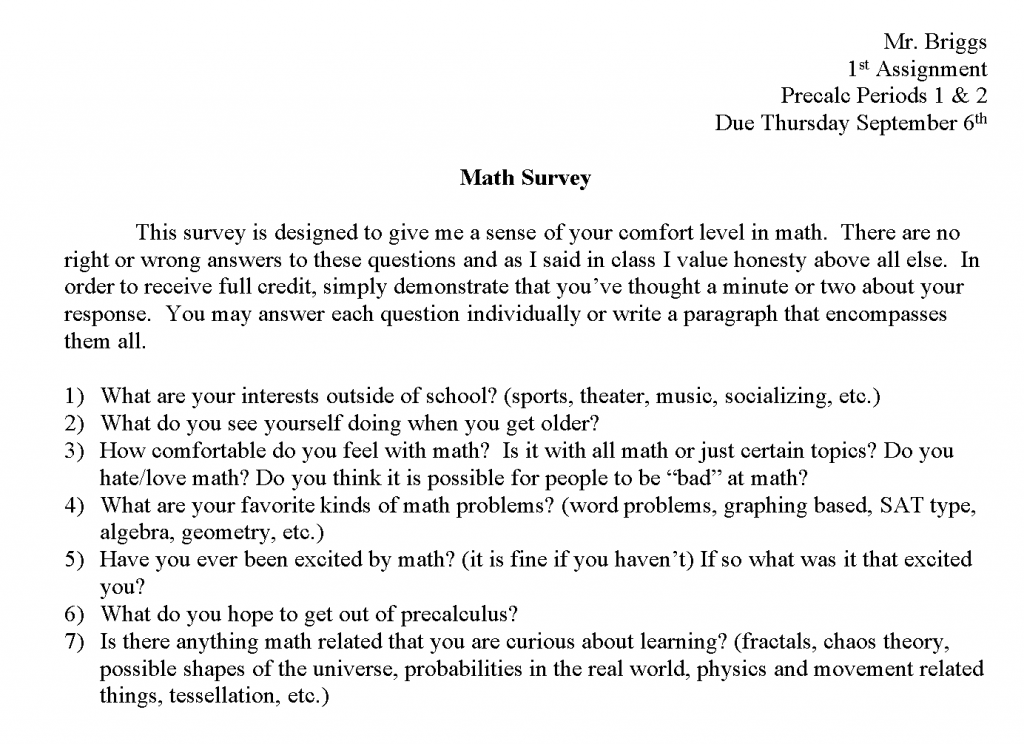
Building opportunities for students to contribute is often in tension with content coverage. Over the length of the term, having students contribute in terms of number of the day or partnered notes has been successful in meeting both objectives. Attendance questions and check-ins, both very popular at EPS, are difficult for me to make class time for though I have been impressed with colleagues’ use of these techniques to better know their students (and thus have their students feel better known).
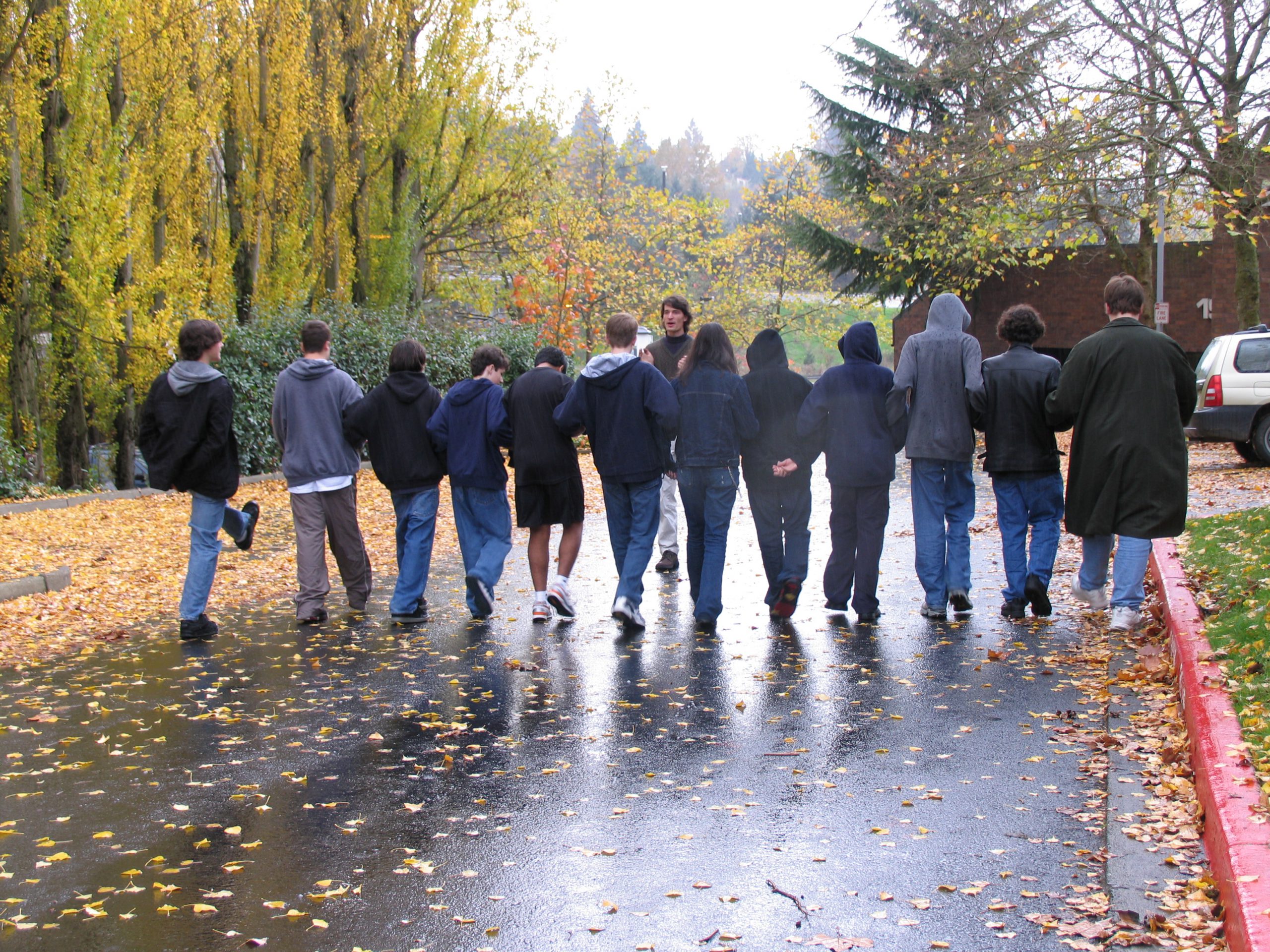 |  |
Adapting to instruction based on formative assessment would be a strength if I could get grading feedback loops down to a couple of days. The micro-regret of finding out that a student had a lingering misunderstanding that continued to affect their understanding is tremendously frustrating to me. This is something that I was much better at early on when I was teaching full-time and a continued objective.
My greatest success in differentiation has been through projects. After being drawn to them in my first year, I quickly realized that I could build the same time structures and checkpoints for all students but tune the difficulty through the project proposal process. For example, building an analog synthesizer is much more math and engineering-intensive than a xylophone but the assignment of building a musical instrument and presenting it, with the physics, can be universally applied. Likewise, a data science project that attempts to look for correlations in events that happened in the past vs. finding correlations between variables that move in sync is far more difficult programmatically.
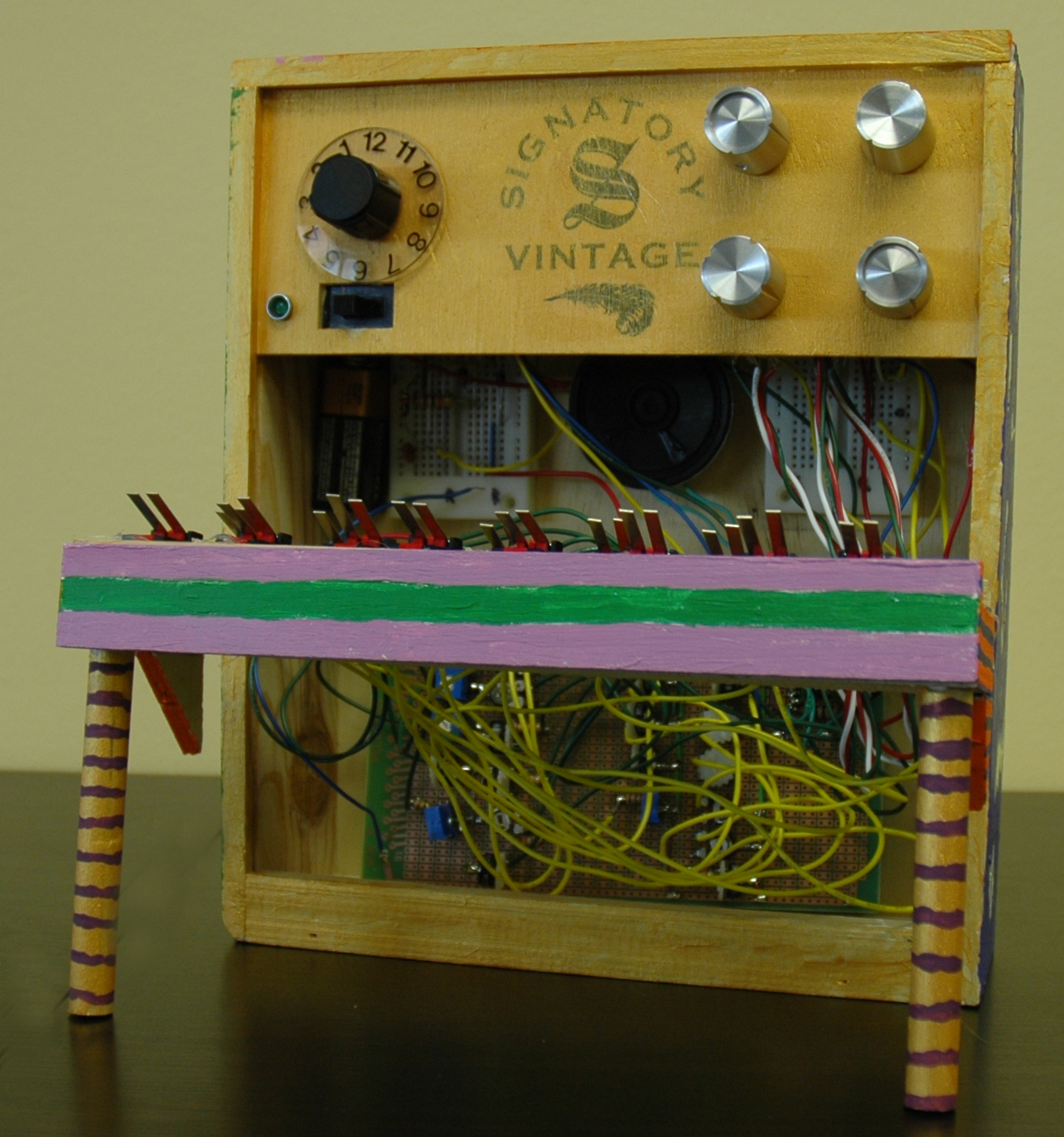 | 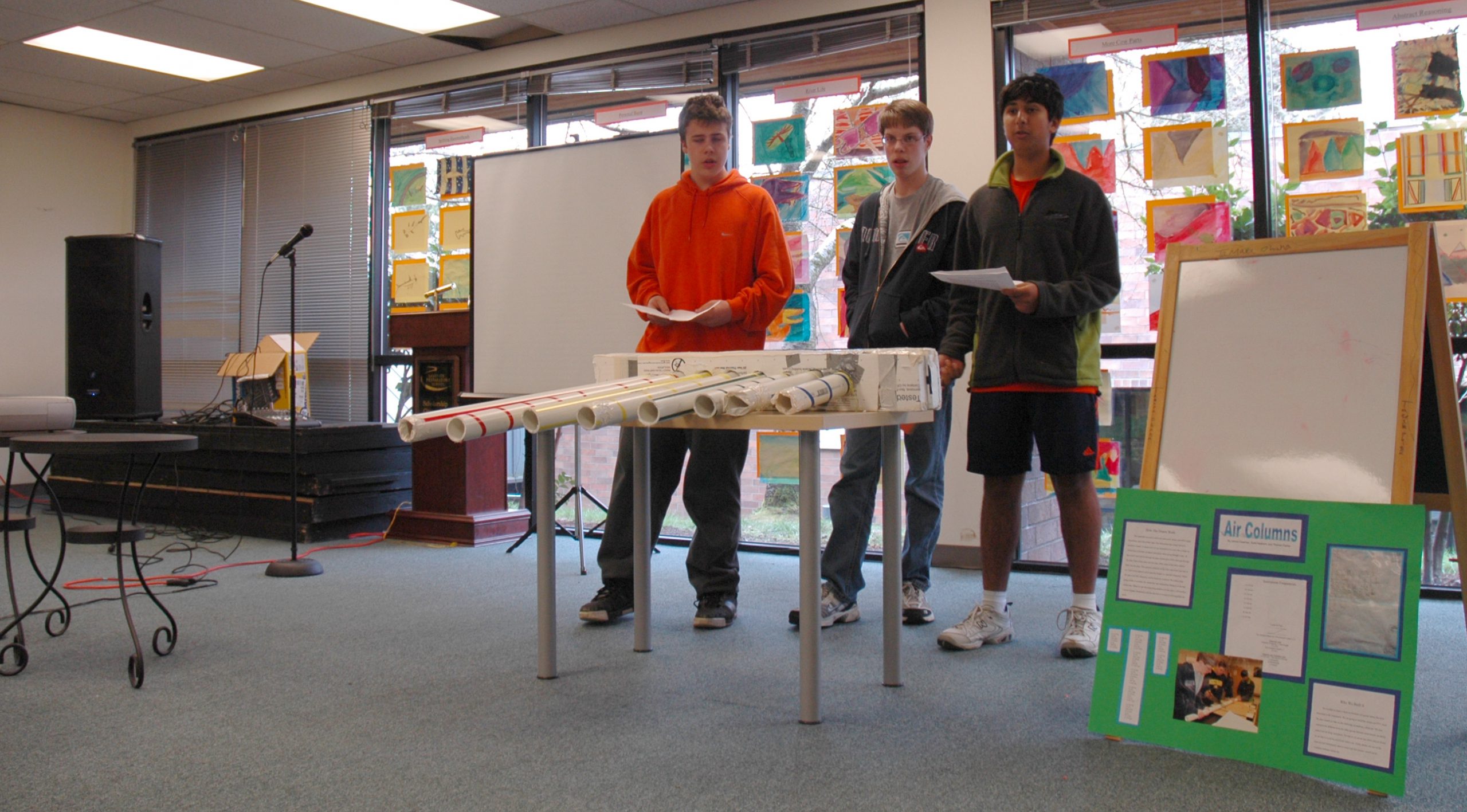 |